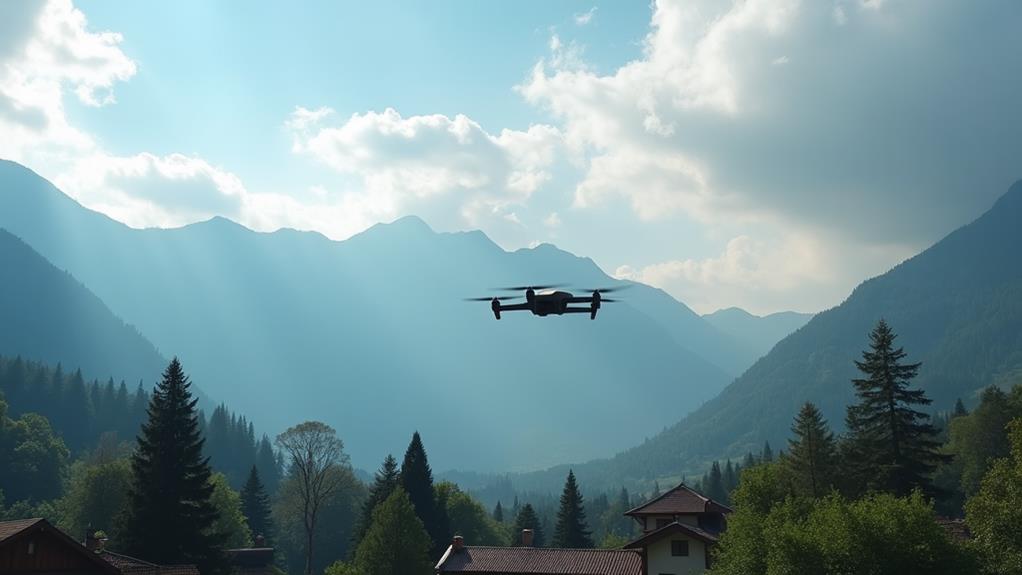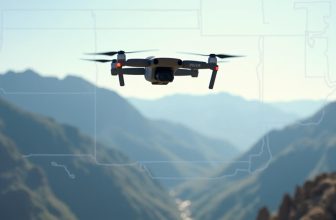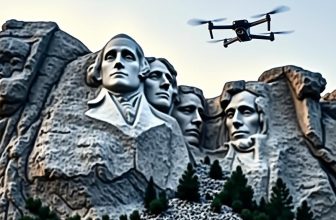
As you prepare to take your drone on its next adventure, consider this: the average drone's range has increased by over 50% in the past five years. However, despite these advancements, you're still limited by several key factors that determine just how far you can fly. It's not just a matter of battery life or the type of drone you have, but a complex interplay of factors that affect performance and distance. But what are these factors, and how can you optimize them to take your drone on the longest, most successful flights possible?
Contents
Key Takeaways
- Drone type and design influence flight distance, with fixed-wing drones generally flying farther than multi-rotor drones.
- Battery life and capacity affect flight time, with higher capacity batteries generally resulting in longer flight distances.
- Environmental weather conditions, such as wind resistance and air turbulence, greatly impact a drone's flight performance and distance.
- Radio transmitter power affects transmission range, with higher power outputs usually resulting in longer transmission ranges.
- Line of sight and obstructions, such as hills, trees, or buildings, can block the signal and limit the drone's flight distance.
Drone Type and Design
When shopping for a drone, its type and design substantially impact its flight performance.
You'll notice significant differences in flight capabilities between a fixed-wing drone and a multi-rotor drone. Fixed-wing drones are typically more efficient and better suited for long-distance flights due to their aerodynamic shape.
This design allows them to cut through the air with less resistance, resulting in smoother and more stable flights.
On the other hand, multi-rotor drones offer more agility and maneuverability.
Their design allows them to take off and land vertically, making them ideal for indoor flights and obstacle-heavy environments. However, they tend to be less efficient than fixed-wing drones due to the increased weight distribution caused by multiple rotors.
When choosing a drone, consider your flying style and the environment you'll be flying in.
If you prioritize speed and efficiency, a fixed-wing drone might be the better choice. If you need more agility and flexibility, a multi-rotor drone is likely a better fit.
Battery Life and Capacity
As you weigh the factors that determine your drone's flight performance, its battery life and capacity play a crucial role in defining the overall flying experience.
A drone's battery is its primary power source, and its capacity directly affects flight time. Battery life is typically measured in regard to its capacity, which is usually expressed in milliampere-hours (mAh) or watt-hours (Wh). A higher capacity generally means a longer flight time, but it also increases the battery's size and weight.
When choosing a drone battery, consider the cell chemistry, as it affects the battery's performance and lifespan.
Lithium-polymer (LiPo) batteries are commonly used in drones due to their high power density and relatively long cycle life. Power density refers to the battery's ability to store energy relative to its size and weight. A higher power density means more energy can be stored in a smaller, lighter battery, resulting in a more efficient and agile drone.
Environmental Weather Conditions
Before you take your drone out for a flight, consider the environmental weather conditions that can substantially impact your flying experience.
Environmental weather conditions, such as wind resistance and air turbulence, can greatly affect your drone's flight performance and distance. Wind resistance can cause your drone to divert from its intended course, reducing its overall flight distance.
For instance, if you're flying into a headwind, your drone's speed and range will decrease due to the increased air resistance. On the other hand, flying with a tailwind can increase your drone's speed, but be cautious not to lose control.
Air turbulence, which can be caused by strong winds or changes in air pressure, can also impact your drone's stability and control. Turbulence can cause your drone to oscillate or wobble, making it difficult to maintain a steady course.
Evaluating the environmental weather conditions before flight can help you make informed decisions about your drone's flight plan, ensuring a safer and more successful flight experience. By understanding these factors, you can optimize your drone's flight performance and maximize its range.
Radio Transmitter Power
Your drone's radio transmitter power substantially impacts its flight performance and range, particularly in areas with heavy radio frequency interference or physical obstructions.
The radio transmitter power determines how far and clear the signal can travel between the transmitter and the drone. Typically, drone transmitters operate within the 2.4 GHz or 5.8 GHz frequency bands, each with its own frequency limitations.
The transmission range of your drone largely depends on the power output of the transmitter.
A higher power output usually results in a longer transmission range, allowing you to fly the drone farther away. However, vital to bear in mind the regulatory limits on transmitter power in your area.
In the US, for example, the Federal Communications Commission (FCC) sets a maximum transmission power of 1 watt for drones.
When choosing a drone or transmitter, weigh the power output and frequency limitations to verify it meets your flying needs.
It's also paramount to understand that a higher power output doesn't always translate to a longer transmission range, as other factors like antenna design and interference can affect signal quality.
Line of Sight and Obstructions
Radio transmitter power is just one piece of the puzzle in maintaining a stable drone connection. Another vital factor to take into account is the line of sight and potential obstructions.
You must maintain a clear visual line of sight between your drone and the controller to guarantee a stable connection. Visual barriers, such as hills, trees, or buildings, can block the signal and cause your drone to lose connection.
When flying in urban landscapes, it's vital to be aware of the surrounding environment and potential obstructions.
Tall buildings, bridges, and power lines can all interfere with your drone's signal. You should also be mindful of other visual barriers, such as trees, power poles, and antennas, which can block the signal and cause your drone to malfunction.
To minimize the risk of obstructions, you should plan your flight route carefully, taking into account the terrain and potential visual barriers.
You should also maintain a safe distance from your drone and be prepared to adapt to changing conditions. By taking into account the line of sight and potential obstructions, you can help guarantee a safe and successful drone flight.
Frequently Asked Questions
Can I Fly a Drone Near Airports and Military Bases?
You shouldn't fly a drone near airports or military bases as they're designated No fly zones due to Airspace restrictions, posing safety risks and potential violations of aviation laws and regulations, so it's best to avoid these areas.
How Do I Handle Drone Mid-Air System Failure?
When a 'technical hiccup' occurs, you'll face a Drone Emergency. In the event of System Failure, you stay calm, assess the situation, and activate your drone's return-to-home protocol or land it safely, if possible.
Are Drone Insurance Policies Required by Law?
You should check local laws, as drone insurance policies are not always required but can mitigate drone liability. Insurance premiums vary, so you must assess your risks and choose a suitable policy.
Can Local Authorities Restrict Drone Flying Areas?
Imagine a map etched with invisible boundaries. You're about to navigate it with your drone, but local authorities can restrict flying areas through Local Ordinances and Municipal Rules, dictating where you can and can't soar.
How Do I Register My Drone With Authorities?
You'll need to complete the drone registration process by submitting required paperwork to authorities, typically online, providing details such as owner info, drone specs, and payment for the registration fee, following the authority's specific guidelines.
Conclusion
You've optimized your drone's performance by understanding its type and design, battery life, environmental conditions, radio transmitter power, and maintaining a clear line of sight. Now, your drone can soar like a bird set free. Consider the DJI Mavic Air 2, which can travel up to 8.8 miles with a strong signal and clear skies. With the right combination of these factors, the sky's no longer the limit – it's just the beginning of your drone's flight possibilities.






